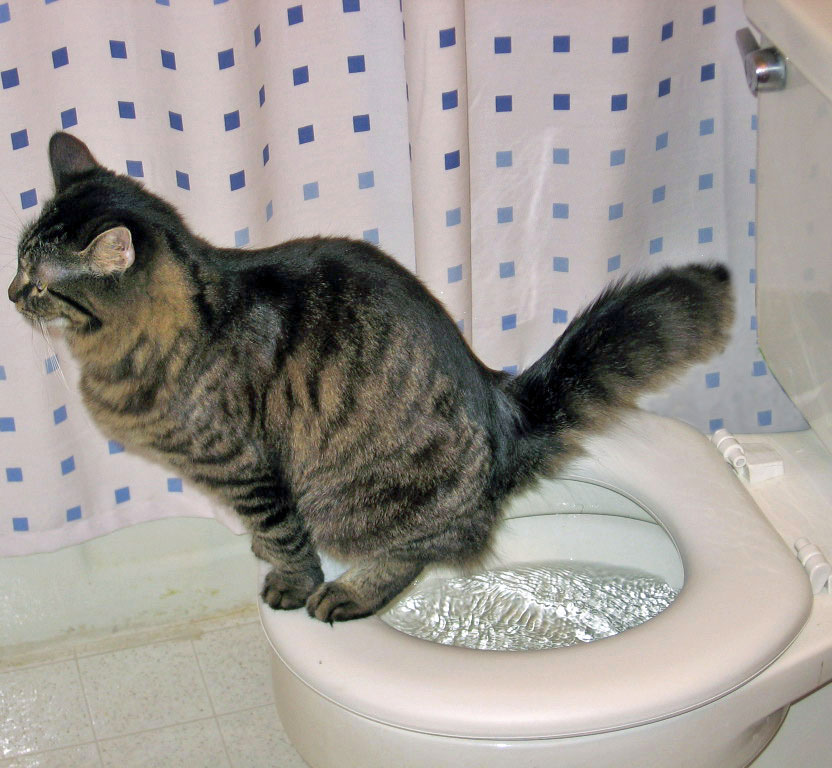Avoid Clogs and Damage: Never Flush Cat Poop Down Your Toilet - Expert Recommendations
Avoid Clogs and Damage: Never Flush Cat Poop Down Your Toilet - Expert Recommendations
Blog Article
What are your beliefs about How to Dispose of Cat Poop and Litter Without Plastic Bags?

Intro
As pet cat proprietors, it's important to be mindful of how we dispose of our feline friends' waste. While it may seem convenient to flush pet cat poop down the toilet, this technique can have harmful repercussions for both the setting and human health and wellness.
Ecological Impact
Flushing pet cat poop presents damaging microorganisms and parasites into the water supply, posturing a considerable risk to water communities. These impurities can negatively influence aquatic life and concession water quality.
Wellness Risks
Along with environmental concerns, flushing pet cat waste can likewise posture wellness risks to people. Pet cat feces may include Toxoplasma gondii, a parasite that can cause toxoplasmosis-- a possibly severe disease, especially for expecting women and people with damaged body immune systems.
Alternatives to Flushing
Fortunately, there are safer and more accountable ways to take care of pet cat poop. Take into consideration the adhering to choices:
1. Scoop and Dispose in Trash
The most typical method of throwing away feline poop is to scoop it into a biodegradable bag and throw it in the garbage. Make sure to utilize a committed trash scoop and get rid of the waste immediately.
2. Usage Biodegradable Litter
Go with naturally degradable cat litter made from materials such as corn or wheat. These clutters are environmentally friendly and can be securely dealt with in the garbage.
3. Hide in the Yard
If you have a lawn, consider hiding pet cat waste in an assigned location far from veggie yards and water resources. Make certain to dig deep enough to avoid contamination of groundwater.
4. Mount a Pet Waste Disposal System
Purchase a family pet garbage disposal system especially designed for feline waste. These systems make use of enzymes to break down the waste, reducing smell and ecological influence.
Verdict
Liable animal possession prolongs beyond offering food and sanctuary-- it likewise includes appropriate waste management. By avoiding flushing pet cat poop down the bathroom and opting for alternate disposal methods, we can decrease our environmental impact and safeguard human health and wellness.
Why Can’t I Flush Cat Poop?
It Spreads a Parasite
Cats are frequently infected with a parasite called toxoplasma gondii. The parasite causes an infection called toxoplasmosis. It is usually harmless to cats. The parasite only uses cat poop as a host for its eggs. Otherwise, the cat’s immune system usually keeps the infection at low enough levels to maintain its own health. But it does not stop the develop of eggs. These eggs are tiny and surprisingly tough. They may survive for a year before they begin to grow. But that’s the problem.
Our wastewater system is not designed to deal with toxoplasmosis eggs. Instead, most eggs will flush from your toilet into sewers and wastewater management plants. After the sewage is treated for many other harmful things in it, it is typically released into local rivers, lakes, or oceans. Here, the toxoplasmosis eggs can find new hosts, including starfish, crabs, otters, and many other wildlife. For many, this is a significant risk to their health. Toxoplasmosis can also end up infecting water sources that are important for agriculture, which means our deer, pigs, and sheep can get infected too.
Is There Risk to Humans?
There can be a risk to human life from flushing cat poop down the toilet. If you do so, the parasites from your cat’s poop can end up in shellfish, game animals, or livestock. If this meat is then served raw or undercooked, the people who eat it can get sick.
In fact, according to the CDC, 40 million people in the United States are infected with toxoplasma gondii. They get it from exposure to infected seafood, or from some kind of cat poop contamination, like drinking from a stream that is contaminated or touching anything that has come into contact with cat poop. That includes just cleaning a cat litter box.
Most people who get infected with these parasites will not develop any symptoms. However, for pregnant women or for those with compromised immune systems, the parasite can cause severe health problems.
How to Handle Cat Poop
The best way to handle cat poop is actually to clean the box more often. The eggs that the parasite sheds will not become active until one to five days after the cat poops. That means that if you clean daily, you’re much less likely to come into direct contact with infectious eggs.
That said, always dispose of cat poop in the garbage and not down the toilet. Wash your hands before and after you clean the litter box, and bring the bag of poop right outside to your garbage bins.
https://trenchlesssolutionsusa.com/why-cant-i-flush-cat-poop/

We had been made aware of that editorial about Can You Flush Cat Poo or Litter Down the Toilet? from an associate on a different domain. You should take a moment to promote this blog if you liked it. Thank you so much for your time invested reading it.
Free Estimates Report this page